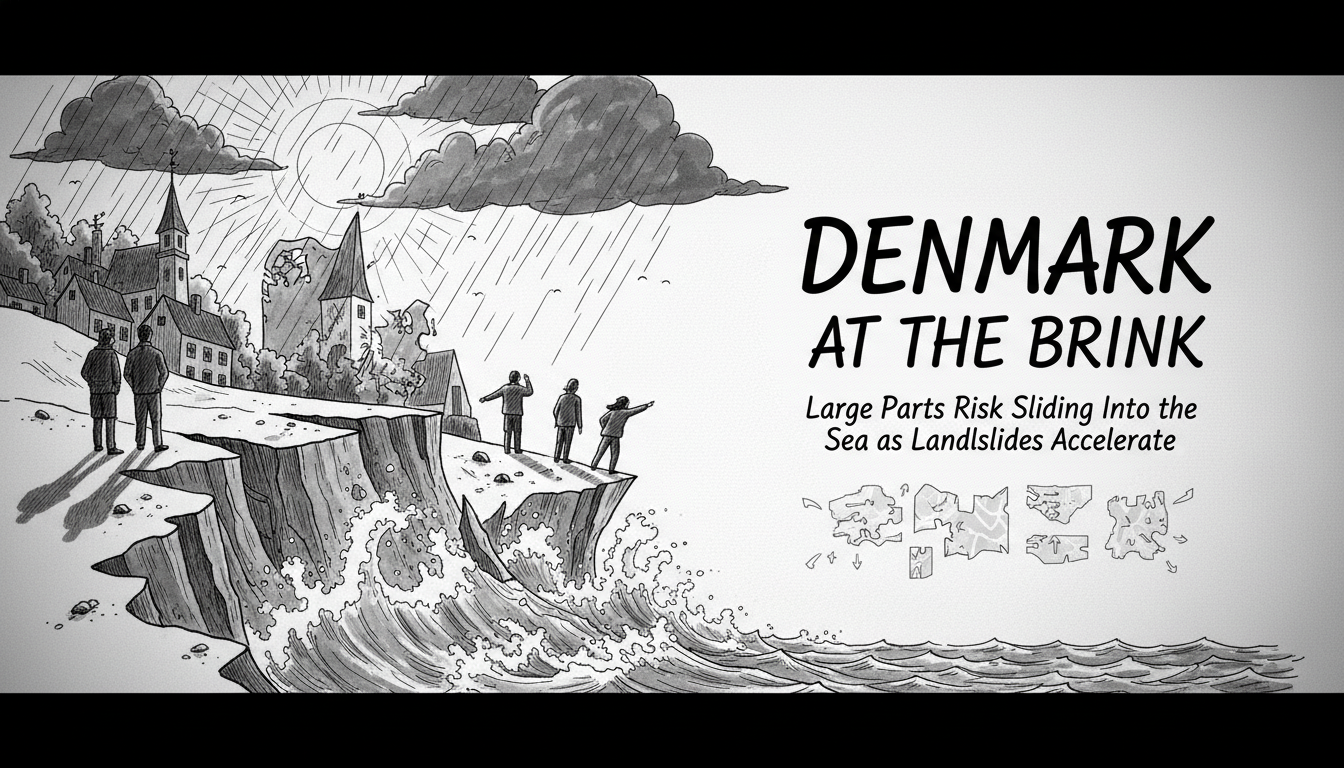Thousands of landslides threaten Danish coastal communities and inland areas as climate change accelerates natural geological processes. Researchers have mapped nearly 4,000 landslides across Denmark, with many showing increased movement during wetter winters.
Geologist Kristian Svennevig, who leads a research team at Denmark's Geological Survey, explains these landslides represent natural landscape processes that have been ongoing for centuries. But climate change is speeding up their development and making them gradually larger.
Many people find it difficult to imagine landslides occurring in Denmark's typically flat landscape. Yet the country contains thousands of active and inactive landslides along coastlines and inland areas. The Geological Survey recently added 700 new landslides to their national database through the ongoing 'Landslides in Denmark' project.
Climate change drives this increased landslide activity through wetter winters that raise groundwater levels. When groundwater stands higher, landslides move more frequently and with greater force. Measurements from slow-moving landslides east of Vejle at Mørkholt show movements up to eight centimeters per year during wet winters when groundwater levels rise about half a meter higher than normal.
Groundwater models predict winter levels could increase by up to 0.7 meters in the Vejle area by 2100. This suggests already mapped landslide zones will experience much more activity as the climate becomes wetter.
Vejle has become something of a landslide hotspot with several major slides in its hilly terrain. Just last February, a family became homeless after a significant landslide occurred in Mølholm near Banevang and the forest area by Mølholm Church.
Particularly affected regions include Eastern Jutland and the western part of the Limfjord area, along with significant landslide activity at Røsnæs, Møns Klint, and Stevns Klint. The geology determines where landslides occur, while climate-driven external factors control how they move.
The landslide mapping aims to identify areas requiring caution during construction projects. While most landslides occur along coastlines, inland areas also experience natural slides. Many large coastal landslides have been developing for hundreds of years but continue evolving and growing larger.
Climate change accelerates these natural processes that have always occurred. Storm surges that previously represented 100-year events could happen every third year within decades. This could lead to permanently flooded areas or dramatically changed coastlines.
Researchers emphasize the need to understand how Denmark's landscape changes with climate shifts so society can adapt to coming transformations. While only a minority of landslides currently cause problems, knowledge about slide processes remains crucial for risk management and adaptation.
The Carlsberg Foundation provided financial support for the landslide research project. Scientists from both the Geological Survey and University of Copenhagen collaborated on mapping over 3,000 Danish landslides.
Svennevig encourages Danes to use the landslide portal to visit these natural areas personally. He describes the dynamic landscape changes as incredibly exciting and often overlooked nature. These locations offer opportunities to genuinely experience the transforming landscape firsthand.
The situation demonstrates how even flat countries like Denmark face substantial geological challenges from climate change. Understanding these processes helps communities prepare for landscape transformations affecting both coastal and inland regions.

